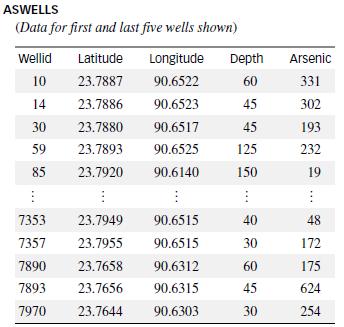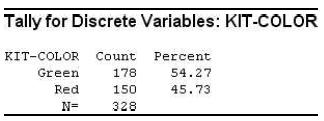Refer to the Environmental Science & Technology (Jan. 2005) study of the reliability of a commercial kit
Question:
Refer to the Environmental Science & Technology (Jan. 2005) study of the reliability of a commercial kit to test for arsenic in groundwater, Exercise 7.59. Recall that a field kit was used to test a sample of 328 groundwater wells in Bangladesh. In addition to the arsenic level (micrograms per liter), the latitude (degrees), longitude (degrees), and depth (feet) of each well was measured. The data are saved in the ASWELLS file.

a. Write a first-order model for arsenic level (y) as a function of latitude, longitude, and depth.
b. Fit the model to the data using the method of least squares.
c. Give practical interpretations of the β estimates.
d. Find the model standard deviation, s, and interpret its value.
Data from Exercise 7.59
Environmental Science & Technology (Jan. 2005) reported on a study of the reliability of a commercial kit to test for arsenic in groundwater. The field kit was used to test a sample of 328 groundwater wells in Bangladesh. If the color indicator on the field kit registers red, the level of arsenic in the water is estimated to be at least 50 micrograms per liter; if the color registers green, the arsenic level is estimated to be below 50 micrograms per liter. The data for the study is saved in the ASWELLS file. A summary of the results of the arsenic tests is displayed in the MINITAB printout below. Use the information to find a 90% confidence interval for the true proportion of all groundwater wells in Bangladesh that have an estimated arsenic level below 50 micrograms per liter. Give a practical interpretation of the interval.

Step by Step Answer:

Statistics For Engineering And The Sciences
ISBN: 9781498728850
6th Edition
Authors: William M. Mendenhall, Terry L. Sincich





